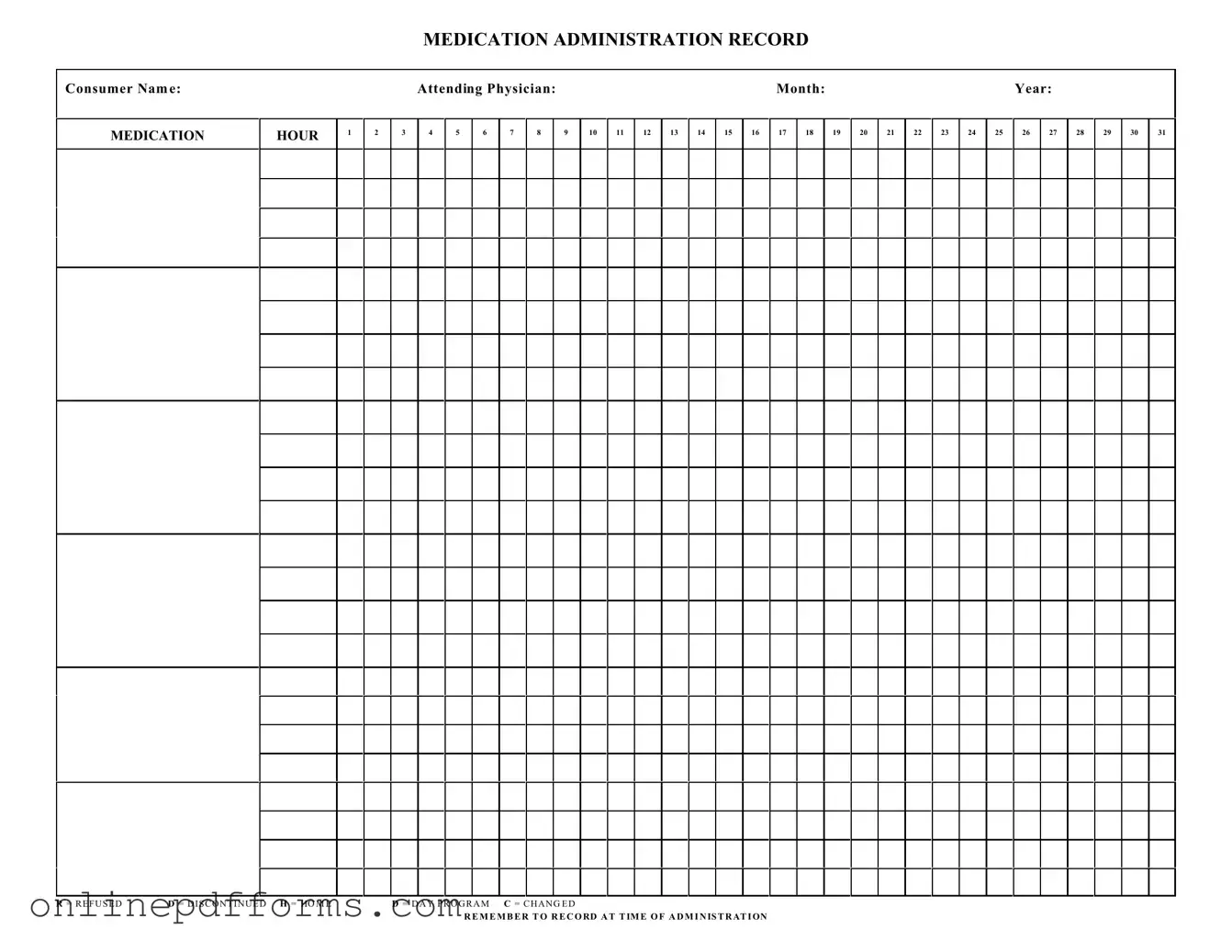Fill in Your Medication Administration Record Sheet Template
The Medication Administration Record Sheet is a crucial document used in healthcare settings to track the administration of medications to patients. This form helps ensure that medications are given accurately and on time, providing a clear record for healthcare providers. For efficient medication management, it is essential to fill out this form correctly; click the button below to get started.
Open Medication Administration Record Sheet Editor Now
